Imperialism in the Anthropocene
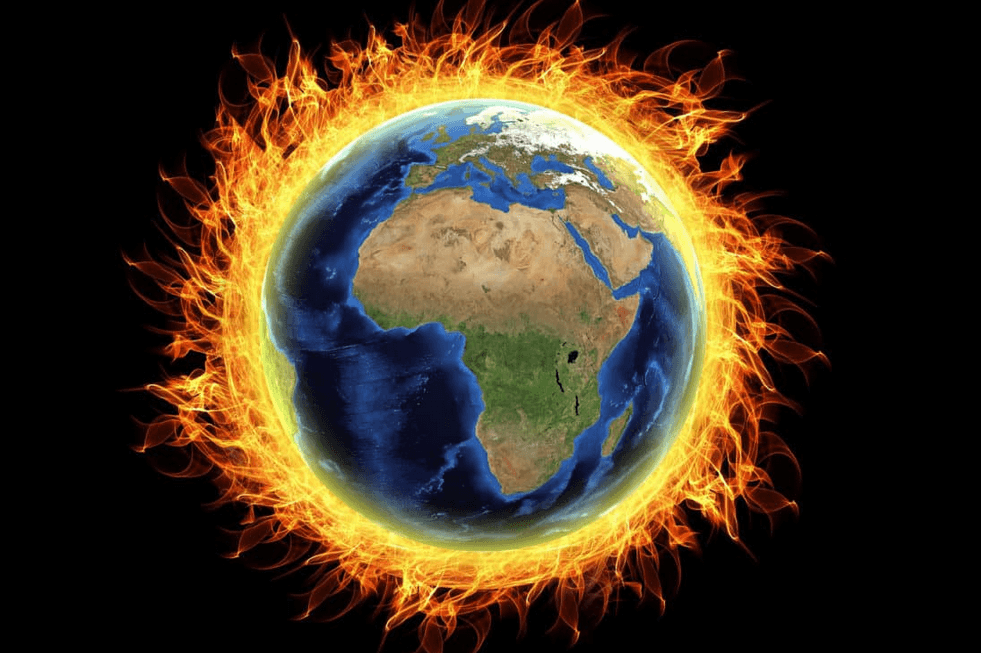 Avtar Kamani from Pixabay
Avtar Kamani from Pixabay[dropcap]O[/dropcap]n May 21, 2019, the Anthropocene Working Group, established by the Subcommision on Quaternary Stratigraphy of the International Commission on Stratigraphy, voted by more than the necessary 60 percent to recognize the existence of the Anthropocene epoch in geological time, beginning around 1950. It defined this new “chronostratigraphic” epoch as “the period of Earth’s history during which humans have a decisive influence on the state, dynamics, and future of the Earth System.” Anthropogenic change, beginning in the mid–twentieth century, was designated as the principal force in the accelerated evolution of the entire Earth System. The Anthropocene Working Group will proceed next to the designation of a specific “golden spike,” or stratigraphic location, standing for the Anthropocene in the geological record, with the aim of getting the new epoch officially adopted by the International Commission on Stratigraphy in the next several years.1
A strong international scientific consensus is thus emerging with respect to the designation of the new geological epoch of the Anthropocene—a term often said to have been “coined” by Paul Crutzen and Eugene Stoermer in 2000, though it first appeared in English decades earlier in “The Anthropogenic System (Period)” in The Great Soviet Encyclopedia.2 The Anthropocene, in the scientific worldview, stands for both a quantitative and qualitative break with all previous geological epochs. Changes on a scale that can be seen as dividing major geological epochs, previously occurring over millions of years, are now taking place over decades or at most centuries due to human action. In this respect, the Anthropocene represents a sharp break from the relatively stable Holocene epoch of the last 11,000–12,000 years, the onset of which marked the end of the last ice age.
In the view of the Anthropocene Working Group and today’s Earth System scientists more generally, the advent of the Anthropocene epoch is the product of a Great Acceleration of economically driven change in the mid–twentieth century, associated with what is sometimes called by economists the “golden age” of capitalist growth after the Second World War. This led to the crossing of numerous planetary boundaries, generating various “anthropogenic rifts.”3
The mid–twentieth century was also a period of Cold War. Hence, one “primary marker” of the Anthropocene is “the artificial radionuclides spread worldwide by the thermonuclear bomb tests from the early 1950s.”4 Among the epoch-making changes associated with the Great Acceleration are vast hockey stick-shaped increases in: fossil fuel combustion, carbon dioxide emissions, ocean acidification, species extinctions (and losses in biological diversity more generally), nitrogen and phosphorus cycle disruptions, freshwater depletion, forest loss, and chemical pollution. The result is a planetary ecological emergency or Earth System crisis.5
Today there can be no doubt about the main force behind this planetary emergency—the exponential growth of the capitalist world economy, particularly in the decades since the mid–twentieth century. Capital itself can be described as a social relation of self-expanding economic (commodity) value. Capitalism, or the system of capital accumulation based in class exploitation and conforming to laws of motion enforced by market competition, recognizes no limits to its own self-expansion. There is no amount of profit, no amount of wealth, and no amount of consumption that is “enough” or “too much.”6 In this system, the planetary environment is not viewed as a place with inherent boundaries within which human beings must live, together with Earth’s other species, but rather as a realm to be exploited in a process of growing economic expansion in the interest of unlimited acquisitive gain, most of which ends up in the hands of a very few. Businesses, according to the inner logic of capital, must either grow or die—as must the system itself.
Capitalism thus promotes a “madness of economic reason” that can be seen as undermining the healthy human metabolic relation to the environment.7 The mere critique of capitalism as an abstract economic system, however, is insufficient in addressing today’s environmental problems. Rather, it is necessary also to examine the structure of accumulation on a world scale, coupled with the division of the world into competing nation-states. Our planetary problems cannot realistically be addressed without tackling the imperialist world system, or globalized capitalism, organized on the basis of classes and nation-states, and divided into center and periphery. Today, this necessarily raises the question of imperialism in the Anthropocene.
Late Imperialism and the Anthropocene
Extra-high profits derived from imperialist rent, drained from the periphery or global South in the process of commodity production, as Samir Amin argued, have historically taken two forms: (1) exchange-value transfers, and (2) use-value transfers.8 The latter can be seen as a process of ecological imperialism whereby the extraction of resources has often devastated poor countries, which have been faced with the expropriation (appropriation without equivalent or reciprocity) of the “free gifts of Nature to capital” to be found in their territories, along with the ecological costs of extraction.9 According to Gyekye Tanoh, head of the Political Economy Unit of the Third World Network-Africa based in Accra, Ghana, recently released Bank of Ghana data show that,
of the $5.2 billion worth of gold exported by foreign-owned mining interests from Ghana [from 1990 to 2002], the government received only $68.6 million [in] royalty payments and $18.7 million in corporate income taxes. In other words, the government received a total of less than a 1.7% share of the global returns from its own gold. Since these figures grossly underestimate the value of gold exports, the returns to Ghana would be much less. What’s even more shocking is that—based on the analysis of the Bank of Ghana—the share of wealth that goes to the communities directly impacted by the mining is 0.11%.10
Although gold is a particularly clear and dramatic example, such plunder is a general phenomenon present to various degrees in relation to nearly all natural resources—whether gold, guano, oil, coffee, or soybeans—that are systematically drained from the global South by multinational corporations. The result is to impose enormous ecological and economic losses on poor, dependent countries—a process examined over centuries in relation to colonialism and neocolonialism in the Americas in Eduardo Galeano’s Open Veins of Latin America.11Capitalist economic accounting, which measures exchange values but not use values, has served to disguise that portion of the imperialist rent associated with the expropriation of use values.12 Hence, it is important to consider the full depth of the ecological robbery of the peoples of the periphery—an inherently violent process historically associated with “the extirpation, enslavement and entombment in mines” of populations in the periphery, which today is connected to other forms of expropriation and extreme exploitation, also violent in nature.13
In the twentieth and twenty-first centuries, imperialism has been characterized by the dominance of large, monopolistic corporations. This led V. I. Lenin to identify the imperialist stage of capitalism with monopoly capitalism (while expressly recognizing that “colonial policy and imperialism” in a more general sense had also existed prior to this and even prior to capitalism).14 In its most recent phase, since the 1970s, the imperialist system has taken the form of the growing dominance of monopoly-finance capital, representing a high level of globalization of production in the form of global commodity chains.
These global commodity chains are integrated with an accelerating long-term transfer of physical raw material resources from poor to rich nations with much larger “material footprints,” defined as “the global allocation of used raw material extraction to the final demand of an economy.” Utilizing material footprint analysis, it was found that, in 2008, 40 percent of total global raw material extraction was for the purpose of enabling trade in other countries. Some seventy billion tons of raw materials were extracted that year, the highest up to that point in all of history. Imports of raw material equivalents (embodied primary materials) in trade are highest per capita for rich economies, led by Japan, the United Kingdom, and the United States. The overall trend in the mature economies is toward a “process of externalization of resource-intensive processes,” making them more and more dependent on raw material-equivalent imports from the rest of the world. At the same time, about two-thirds of the total material flow in extracted resources associated with exports remains in the exporting countries primarily as processed wastes and auxiliary material flows, often generating considerable ecological damage, categorized as economic externalities.15
Although China is often designated as the country with the largest material footprint, drawing on the resources of the entire world, the picture that this conveys is false, given that China is by far and away a net exporter of primary materials in embodied (material footprint) terms. Such a development pattern, associated with global South countries generally, leaves these nation-states with outsized ecological costs while, in consumption terms, the benefits of the natural resources go mainly to the rich countries under conditions dominated by unequal ecological exchange.16
If ecological plunder has occurred over centuries through various modes of expropriation and exploitation imposed directly on colonies and neocolonies in the global South, the effects of ecological imperialism are also evident in relation to the global commons, that is, in the oceans and the atmosphere. Since the passage of the 1982 Law of the Sea, nearly half of the world’s ocean falls under the jurisdiction of nation-states, mostly within “exclusive economic zones.” Eighty-three countries, most of them small island nations, but also larger states like the United Kingdom and the United States, now have more ocean than land in their territorial jurisdictions. This has facilitated the expropriation of ocean resources. It has also given dominance in this realm to the leading imperialist nations, which have the capital and technology to plunder these resources. These core nations are also frequently able to seize control from and take advantage of peripheral states, particularly with the economic leverage provided by states’ increasing introduction of privatization regimes of ocean management. The result in recent years has been what is known as ocean grabbing, shutting out small nations and small fishers, and allowing multinational corporations to move in and overexploit both fisheries and seabed resources. Meanwhile, the International Seabed Authority allows states and corporations to exploit, for their own benefit, oil, natural gas, minerals, and precious metals in and under the seabed in international waters, despite the fact that these are ocean commons.17
As United Nations Special Rapporteur on the Right to Food, Olivier de Schutter, declared in 2012, “‘ocean-grabbing’—in the shape of shady access agreements that harm small-scale fishers…and the diversion of resources away from local populations—can be as serious a threat as ‘land-grabbing.'”18 Ocean grabbing is thus a process of enclosing the ocean commons. The Transnational Institute in 2012 determined that “large-scale fleets operating in territorial marine zones ‘capture’ resources from local fishers and the entire chain of people who rely on traditional fishing activities. The European Union’s (EU) fishing agreements with Morocco, Mauritius, Mauritania and Pacific Island States, for example, are fostering this kind of dispossession.”19 Global fishing fleets have doubled their capacity to 3.5 million vessels since the 1970s, but the 1 percent of these that are industrial ships account for up to 60 percent of the seafood catch. Small island countries often get a mere pittance for the sale of their fishing rights to international fleets.20
What is sometimes called the atmospheric commons reveals the historical consequences of imperialism in an entirely different way. Anthropogenic climate change induced mainly by cumulative carbon dioxide emissions since the Industrial Revolution has compelled the world community to adopt an implicit climate budget based on limits on carbon emissions, determined by maximum acceptable levels of carbon concentration in the atmosphere. This means finding a way to get back down to 350 parts per million (ppm) from the present 414 ppm of carbon dioxide concentration in the atmosphere, while staying at all costs below 450 ppm. The goal is to limit the increase in global average temperature over preindustrial levels to 1.5ºC—with a 2ºC increase (corresponding to 450 ppm) representing the final guardrail, beyond which climate change is likely to spin irreversibly out of control. In accordance with these parameters, the Intergovernmental Panel on Climate Change has recently called for net zero carbon emissions by 2050, which would give at least a 50 percent chance of limiting the increase of global average temperatures to 1.5ºC.
At present, more than 60 percent of the allowable carbon under this budget—if the world is merely to seek to stay below a 2ºC increase in global average temperature (equivalent to 450 ppm)—has been emitted to the atmosphere. Today’s business as usual puts the world on a trajectory to hit the trillionth metric ton of carbon, reaching the 2ºC boundary—marking irreversible climate change—in 2035.21 Carbon dioxide emissions are cumulative, so what matters is the amount that each country or region has contributed. The United States, Canada, Europe (and Eurasia), Japan, and Australia have together contributed around 61 percent of the total, as compared to 13 percent for China and India taken together. Russia accounts for another 7 percent, and world ship and air transport are 4 percent. The entire rest of the globe accounts for 15 percent of cumulative emissions. These disparities are only increased if consumption-based rather than production-based emissions are used.22
From the viewpoint of the global South, this means that the atmospheric space for the use of fossil fuels for their own development has already been taken up by the imperialist countries and very little remains for South countries to develop their own economies. In principle, the United Nations Climate Convention under the Kyoto Protocol had given much greater responsibility to wealthy countries to reduce carbon dioxide emissions, stipulating that the Annex I countries would drastically cut their emissions ahead of developing countries with fewer cumulative emissions.23 Yet, U.S. emissions per capita have remained at about three times the global mean and its overall emissions continue to increase. Calculating the per capita shares of cumulative carbon dioxide emissions in 2012, the core capitalist countries had already exceeded their fair share by 568 billion metric tons, creating an enormous carbon debt or obligation to underdeveloped countries.24
Although the poles are warming faster than the low latitude regions of the globe, the effects at the mid– to low latitudes, especially dry regions, can be very severe. Global warming is hitting the hotter, low latitude, tropical and subtropical regions of the earth especially hard. Many low latitude countries are facing temperature increases that threaten to make them unlivable. Earth System conditions thus determine which global regions are most affected geophysically by climate change, with countries in the tropics and subtropics initially more vulnerable. Thus, one crucial study in Environmental Research Letters in 2011 declared: “Those countries affected most by the warming are not the ones that are most responsible for it. The fact that locally significant warming emerges first in [low latitude] countries with low emissions has no underlying economic or societal cause.”25 As stated by climatologists James Hansen and Makiko Sato, “temperature rise itself imposes a strong disproportionately large effect on low latitude countries.… Business-as-usual fossil fuel emissions result in some regions in the Middle East becoming practically uninhabitable by the end of the century.” The subtropics are particularly vulnerable to drought intensification. In contrast, countries located at higher latitudes, which are generally wealthier, while affected by climate change-induced increases in storm intensity, droughts, and heat waves, may in some cases actually find their average temperatures moving more toward the global optimum.26
But if countries in hotter, low latitude regions are affected disproportionately by global warming, this is only made far worse by the fact that these countries are also generally poorer, which is the result of social-historical causes. One effect of climate change is therefore to exacerbate already existing global inequalities. The absolutely catastrophic effects of climate change are therefore expected to emerge first in the South. The North too is threatened, but, at least initially, to a lesser extent, due to both environmental and social factors. An analysis in Nature provided a benchmark estimate in which “average income in the poorest 40% of countries declines by 75% by 2100 relative to a world without climate change, while the richest 20% experience slight gains, since they are generally cooler.”27 Although the numbers might be questioned, the divergence in trends is obvious.
This divergence in fates between the global North and South, strongly impacted by the imperialist dimensions of the metabolic rift, is already making itself felt. An article by Noah S. Diffenbaugh and Marshall Burke, “Global Warming Has Increased Economic Inequality,” in the Proceedings of the National Academy of Sciences, May 14, 2019, indicated that “there is growing evidence that poorer countries or individuals are more negatively affected by a changing climate, either because they lack the resources for climate protection or because they tend to reside in warmer regions where additional warming would be detrimental to both productivity and health.” The combination of environmental and social factors suggests that there are some “warming-induced penalties in poor countries, along with warming-induced benefits in some rich countries.”28 The complexity of climate conditions, and the multiplicity of dangers attending abrupt climate change, suggest that while poor countries in the South will experience catastrophic effects, the threats to the countries in the North are by no means negligible. Still, the most important factor in determining differential outcomes is undoubtedly the social one, related to the greater wealth and hence access to resources of the North.
Other climate change factors also point to greater impact in the global South than the North. Small island developing states, thirty-seven of which are members of the United Nations and another fifteen of which are classified as mere territories, are all endangered by sea-level rise, as are low-lying and often densely populated coastal nations such as Bangladesh and Vietnam.29 The loss of “water towers” associated with mountain glaciers and headwaters that behave as reservoirs, storing water during winter and releasing it slowly in the summer, will have the greatest impact in the Indian subcontinent and China where as many as a billion or more people may have their water supply diminished by the melting of the Himalayan glaciers.30 Climate change could disrupt the monsoons with enormous, but unpredictable, consequences. Tropical forests with their great diversity of life and their importance for regional and global climate stability are especially vulnerable to warming.
Given the reality of imperialism, the main response by the economic and military power structures in the North to this climate rift, pointing to more serious vulnerabilities to climate change in the global South than in the global North, has been mainly twofold: (1) to explore how these vulnerabilities in the South create new global security issues, and (2) how they might be exploited so as to increase imperial dominance. This is most obvious in the case of the United States, where the new grand strategy of the Donald Trump administration is one of global “energy dominance” through the expansion of fossil fuel production and the use of this to leverage greater geopolitical and geoeconomic power.31 The U.S. military, meanwhile, is preparing for a host of new vulnerabilities, related in particular to oil and water, and for interventions to secure U.S. global hegemony in these changing circumstances. Economic and military interests are working together to strategize means for securing global value and resource chains, so as both to strengthen Fortress America and secure its supply lines—working as well with its junior partners in the triad, Europe and Japan. This strategic repositioning of imperialism in the Anthropocene can best be seen by examining the race for control of natural resources in two areas: fossil fuels and water.
Energy Imperialism
In 2018, John Lehman, secretary of the navy in the Ronald Reagan administration, reflecting on the two major wars fought by the United States in the Middle East at the close of the twentieth and the opening of the twenty-first century, declared: “You don’t want to fall into the trap of the left and say that we only went into Iraq for their oil but depending [on] how you phrase it, the costs [of these wars] can be attributed to the strategic dependence we have on Gulf oil.”32In other words, the issue, according to Lehman, was not just the immediate rewards from additional oil production—a naive view he attributed to the left—but the defense of an entire imperial economic system based on fossil fuels.
Today, following the fracking revolution, the United States is officially pursuing a strategy of total energy dominance in what is seen as a global competition for fossil fuels, against a backdrop of planetary ecological disruption.33 The role of climate change in altering the conditions of U.S. imperial dominance permeate U.S. military and security discussions. And while global warming itself is not mentioned in the official 2017 National Security Strategydocument of the United States, its very absence, coupled with the insistence on defending U.S. “sovereignty” with respect to fossil fuels and the criticism of “antigrowth” approaches to fossil fuel energy, point to its overriding significance in the Anthropocene crisis even there.34
The general approach in the U.S. military and strategic community is to see climate change as a “threat multiplier,” associated with such facts as: political instability, negative effects on food availability and prices, water and energy shortages, spread of disease, extreme weather emergencies, mass migration, disruption of maritime transport, economic collapse in vulnerable nations, and increased threats to economic global supply chains—particularly in strategic materials.35 The prevailing viewpoint is one of looking outward from Fortress America and its various global bastions, encompassing the United States (and Canada); its military bases overseas of which there are more than six hundred; its dependencies; its European and Japanese so-called allies; the Greater Middle East, where it has been in perpetual war for almost three decades; and its various critical supply lines.36
As early as 2003, a report commissioned by the Pentagon on abrupt climate change declared that it was necessary to “create vulnerability metrics” as to which countries would be hit hardest by climate change in order to make it possible for the United States to act effectively in safeguarding its own geostrategic interests. It was suggested that, under these circumstances, relatively well-off populations with ample natural resources and food producing capabilities, such as the United States and Australia, would be likely driven to build walls and “defensive fortresses” around themselves to keep massive waves of would-be immigrants out, no doubt in the name of defending their national sovereignty.37 As the report explained,
violence and disruption stemming from the stresses created by abrupt changes in the climate pose a different type of threat to national security than we are accustomed to today. Military confrontation may be triggered by a desperate need for natural resources such as energy, food, and water rather than conflicts over ideology, religion, or national honor. The shifting motivation for confrontation would alter which countries are most vulnerable and the existing warning signs for security threats.38
As the world’s carrying capacity declines under harsh climatic conditions, the authors of the report indicated that warfare would become more widespread, producing increased dangers of thermonuclear conflagration.
The military and security literature in the United States has continued to promote this general strategic outlook, affirming the reality of climate change while focusing on the means of advancing U.S. global hegemony in the context of the current planetary emergency. Implicit in this is the recognition that the United States will be less directly hit initially than most of the rest of the world by the effects of global warming. Washington can then concentrate on using its global economic, political, and military power in these circumstances of growing worldwide chaos and catastrophe to advance its own agenda of full-spectrum dominance.
In this respect, the U.S. military, imperial state, and economy remain tightly linked to the major U.S. fossil fuel corporations. This has led to the development of a new strategy of energy imperialism, in which U.S. preeminence in the control of world energy and a commitment to maximal fossil fuel extraction have been placed at the center of today’s national security objectives. With the fracking revolution, U.S. production of oil and gas rose massively, causing the Barack Obama administration to remove regulations limiting the export of U.S. crude oil. Between 2015 and 2018, U.S. crude oil exports increased fourfold and its liquid natural gas exports increased by thirty-five-fold. The United States in 2018 exported two million barrels of crude oil a day, making it one of the world’s leading oil exporters. At the same time, decreased dependence on oil imports has allowed it to impose stringent economic sanctions on major oil powers to which it is opposed, such as Venezuela, Iran, and Russia.39
The Trump administration has sought to remove all regulatory restrictions that would limit the expansion of the fossil fuel industry. This has resulted in a vast expansion in fossil fuel production and infrastructure, with the United States emerging as the leading fossil fuel producer of both oil and natural gas in the world. Even as debates are taking place on a Green New Deal in the United States and in the world as a whole, oil- and gas-pipeline expansion globally has tripled since 1996, with over half of the ongoing pipeline expansion projects (and over a third if measured by pipeline length) located in North America, connecting points of extraction with refineries and export terminals. Oil- and gas-pipeline expansion plans (preconstruction and construction) in North America currently amount to $232 billion (over $600 billion globally), with total oil and gas infrastructure expansion in excess of $1 trillion for North America and $2.9 trillion globally.40
The U.S. pipeline boom is directed at exports since the expansion of oil and gas extraction is far more than can be absorbed by domestic consumption. Under a Current Policies Scenario (or business as usual), by 2040 world demand for natural gas relative to 2017 prices is projected to rise by 55 percent, while oil demand is expected to increase by 26 percent. Globally, “banks, equity investors, and bondholders are in the process of placing over $600 billion in bets on an expanded pipeline system [which includes over 300 pipelines in development globally] with an expected lifespan of 40 years or more.”41
According to Ted Nace, lead author of a Global Energy Monitor report on the Pipeline Bubble, “these pipelines are locking in huge emissions for 40 to 50 years at a time, with the scientists saying we have to move in 10 years. These pipelines are a bet that the world won’t get serious about climate change, allowing the incumbency of oil and gas to strengthen.”42 The pipeline infrastructure creates a path dependency, ensuring investment and support for burning fossil fuels, dramatically shortening the climate horizon associated with the trillionth metric ton of carbon. In the United States alone, the natural-gas output made possible by these pipelines, either under construction or in the preconstruction stage, would add over half a billion metric tons of carbon dioxide each year by 2040, above 2017 levels.43 ExxonMobil, the leading U.S. oil multinational, has declared that it plans on pumping 25 percent more oil and gas in 2025 in its world operations than it did in 2017.44
It is on the back of this expansion of oil and natural gas production and pipelines that the Trump administration has erected its new imperialist strategy of global energy dominance in defiance of all concerns over climate change. As Trump declared in June 2017: “We will be dominant. We will export American energy all over the world, all around the globe,” especially Asia. The fossil fuel industry had saved U.S. “sovereignty.” U.S. energy policy is to expand not only oil and gas production but coal production worldwide. The United States, he declared, was working on financing overseas coal plants in Ukraine and elsewhere.45
The U.S. National Security Strategy document released in December 2017 insisted that “energy dominance”—giving the United States the central position in all aspects of global energy production and consumption, based on “unleashing” its abundant fossil fuel resources—was the key to economic growth and to “countering an anti-growth energy agenda that is detrimental to U.S. economic and energy security interests.”46 Michael Klare notes: “From the White House perspective, the U.S. is engaged in a momentous struggle for global power with rival nations and, it is claimed, the country’s abundance of fossil fuels affords it a vital edge. The more of those fuels America produces and exports, the greater its stature in a competitive world system, which is precisely why maximizing such output has already become a major pillar of President Trump’s national security policy.” This “militarization of energy policy” is not occurring so much in ignorance of climate change or of the advent of the Anthropocene, as based on a bet that fossil fuels are the means to increased imperial power, overriding all other considerations, and need to be locked in so that no alternative-energy revolution is possible.47Humanity be damned.
On May 28, 2019, the U.S. Department of Energy issued a press release rebranding natural gas as freedom gas and referring to its carbon dioxide molecules as “molecules of U.S. freedom.”48
Water Imperialism
One of the most immediate and profound impacts of climate change for people around the world is the acceleration of the global water cycle caused by excessive greenhouse gases (trapping heat/energy) in the atmosphere. Essentially, as science writer Richard A. Kerr put it, since 1950 “wet places have been getting wetter while dry places got drier.”49 More violent storms and excessive precipitation in the form of flooding heightens the risk to agriculture in wet regions. The growing threat of extreme, long-term drought in many other regions of the world, the fact that the majority of the world’s agricultural lands suffer from high levels of soil degradation and loss, and the displacement of people due to such anthropogenic ecological disasters are indicative of a renewed expansion of dust-bowlification at an unprecedented pace and scale.50
While deforestation is a well-known contributor to climate change, it also has direct effects on the world’s hydrological cycle. Forests are critical components of the world’s water cycle and are responsible for providing life-giving rainfall to regions around the world. Widespread deforestation results in the loss of “giant rivers of water in the air”—formed from the water vapor released into the atmosphere by the world’s vast forests as trees and other plants exhale through their foliage moisture drawn from the ground via complex root systems.
Fred Pearce writes: “As we shave the planet of trees, we risk drying up these aerial rivers and the lands that depend on them for rain. A growing body of research suggests that this hitherto neglected impact of deforestation could in many continental interiors dwarf the impacts of global climate change. It could dry up the Nile, hobble the Asian monsoon, and desiccate fields from Argentina to the Midwestern United States.”51
In the present imperial economic context, the impact of the acceleration and disruption of the global water cycle on everyday water availability and food production is severe enough to contribute to hunger levels rising once again, especially in Latin America and most of Africa.52In fact, while Bain and Company recently reported that in 2019 “the luxury goods market continues to shine” with “gourmet food and fine dining…up 6%,” severe hunger is currently higher than in 2014 in every region except North America and Europe.53 Unusually dry conditions in Central America are partly responsible for the migrants heading north to the United States.
In this new Dust Bowl era, pollution, unsustainable water withdrawals (especially for agricultural, industrial, and energy production), inadequate and failing infrastructure, deforestation, and the melting of the world’s mountain glaciers—the apex of the world’s water towers—compound the threats of freshwater and food scarcity.54 A 2016 study published in Science Advances indicated that already “about 66% [of the global population] (4.0 billion people) lives under severe water scarcity…at least 1 month of the year.… The number of people facing severe water scarcity for at least 4 to 6 months per year is 1.8 to 2.9 billion.… Half a billion people face severe water scarcity all year round.”55
Further adding to the woes of the most vulnerable are those profiting from the misery imposed on millions by the pursuit of accumulation without end. Recognizing the return potential of controlling the dwindling resources most critical for life, “corporations and investors in wealthy countries are buying up foreign farmland and the freshwater perks that come with it.” The United States is one of the leading countries in this regard. Recent trends in international land deals indicate that investors “don’t grab land in places without access to water,” as geographer Wendy Wolford put it. In recent decades, about 66 percent of these purchases were in countries with high levels of hunger. Environmental scientist Paolo D’Odorico, who has helped document these neocolonial trends, said that “in many of these countries, the sum of the water being grabbed would be enough to eliminate malnourishment.”56
This situation is clearly untenable for billions of people on the planet, leading even Trump to recognize that “water may be the most important issue we face for the next generation.”57 It is no wonder under these conditions that, as scholars of international affairs from George Washington University write, water problems are an “accelerator of violence” and “scholarly literature and intelligence forecasts have also raised doubts that water stress will continue to engender more cooperation than conflict.”58 A report by the Center for Climate and Security outlines the struggle for control of the world’s limited freshwater and the “weaponization of water” as “epicenters of climate and security” in “the new geostrategic landscape of the Anthropocene.” In other words, they are critical issues for global security, impacted by a rapidly changing climate and affecting regions around the world.59
In the face of all of this, foreign-policy analysts have focused on “who controls the tap” and urged a more aggressive approach to securing U.S. strategic interests with respect to water, integrating government and private-sector efforts in regions around the world and taking leadership against the encroachment of competitors like China. They highlight the centrality of water and the control of key freshwater sources to leveraging soft power and consolidating hegemony in regions, especially under conditions of increased water scarcity.60 Of particular concern is control of the world’s water towers or mountain glaciers and headwaters that account for more than half the world’s freshwater. These water resources are critical ecologically, socially, and economically because “all the major rivers of the world have their headwaters in highlands and more than half of humanity relies on freshwater that accumulates in mountain areas.”61 China’s control of the Tibetan plateau and the potential conflict with India over infrastructure projects that divert water from downstream users are particular concerns. Analyst Troy Sternberg writes that “in transboundary environments water infrastructure exemplifies assertion of hegemonic rights and control” and “the future of water towers very much reflects a power game, both in terms of who is able to control and manipulate the water, and whether or not this actor can rebuff any challenge from downstream users.”62
As water scarcity increases and glacier retreat and disappearance hasten under climate change, the stakes will only be higher in contests for control of the larger repositories of freshwater in the world’s highest peaks. The downstream impacts of glacier shrinkage indicate that the scale of potential changes is enormous. More than 1.4 billion people rely on water from the Ganges, Indus, Brahmaputra, Yangtze, and Yellow rivers as well as the upstream snow and ice reserves that feed them. Not all of these rivers, however, appear to be equally subject to the effects of climate change, with the Brahmaputra and Indus basins most directly affected.63
In 2012, the U.S. Office of the Director of National Intelligence released an intelligence community assessment report on Global Water Security, outlining particular risks and opportunities of interest to the United States in regard to river basins around the world. It highlights the threat of increased water problems in countries “important to the United States,” which will hamper economic growth and U.S. policy objectives. The report also outlines the opportunities these problems present for the United States, whose expertise and technology will be sought to address water problems, and for U.S. businesses that will profit from increased agricultural exports to regions made less self-sufficient due to freshwater scarcity. It is stressed that “active engagement by the United States to resolve water challenges will improve US influence and may forestall other actors achieving the same influence at US expense.”64
The emphasis on “water as an opportunity” is a prominent theme in the 2017 Global Water Strategy released by the Trump administration, which notes that “water is an entry point to advance core democratic values.” Engaging in international water issues, it is indicated, is a profit-making opportunity for the private sector and an avenue through which to “encourage global institutions and organizations to promote best policies and approaches aligned with U.S. interests.” Water crises are deemed as important opportunities to promote U.S. interests through strategic foreign aid and assistance.65
Despite the strategy outlined by the current U.S. administration, Wilson Center analysts and others suggest the U.S. government is not doing enough. They propose that “to enable such strategic direction on hydro-diplomacy, the president should establish a public-private Center for Water Conflict Prevention. This would mobilize a unified government approach while leveraging the private sector to harness the economic opportunities created.” Such coordination through an established center would, they argue, create “hope and potential opportunity for shifting the water-related balance of power in critical regions.”The same analysts argue that the inevitable consequence of not implementing full-throttle engagement with water issues, especially in the context of climate change, is the decline of the U.S. position. They warn that “if left unchecked, the effects of climate change on Asia’s water security could drive China’s neighbors to align more closely with the country that controls the tap. This alignment could both undermine U.S. presence in the region and drive the region toward a multipolar leadership structure that favors China. Defense and security policymakers ignore the implications of water security in Asia at their peril.”66
Yet, while U.S. foreign-policy and security analysts, such as Marcus D. King and Julia Burnell, discuss “The Weaponization of Water in a Changing Climate” and point out that the “U.S. intelligence community suggests that as water becomes scarcer, states may begin employing water as an interstate ‘weapon,'” the notion that the United States as the leading imperial power might engage in such actions is left out of consideration altogether. Nevertheless, Washington is in full support of Saudi Arabia’s war in Yemen where it has weaponized water in one of the most water-scarce countries in the world, repeatedly bombing dams, reservoirs, and sanitation facilities, leaving nineteen million people in the country without clean water.67
While the foreign-policy establishment hones in on the world’s water, and the potential regional, national, and subnational conflicts that now seem likely, at the local level, water and earth defenders are murdered with impunity in record numbers by the henchmen of some of the core industries at the center of the world’s water crisis: agribusiness, the oil and mining industries, poachers, and loggers.68
Extinction Rebellions
The failure to put the issue of imperialism in the Anthropocene at the center of its analysis is the greatest weakness of the Western ecological movement. It is often acknowledged that the effects of climate change and the crossing of planetary boundaries in general are having their greatest effects on the global South, where millions are already suffering from climate change. This is often connected to global inequality and to the long history of colonialism and imperialism. It is also recognized that the detrimental effects of global warming are magnified by global inequality. Finally, it is often understood on the left that climate change is a planetary issue and requires a global rising of humanity to overcome the capitalist power structure that is driving it.69 Nevertheless, there is very little consciousness at present that imperialism, representing the global rift inherent in the world capitalist system, is an active force organized against ecological revolution, seeking to lock in the fossil fuel system and the current regime of maximal environmental degradation and human exploitation. Twenty-first-century imperialism is, in this sense, the exterminist phase of capitalism.
All of this points to the fact that any critique of capitalism that does not include imperialism is insufficient to confront our current epochal crisis. To be sure, any realistic attempt to face up to the crisis of the Anthropocene must begin with a general critique of capitalism as a system that puts the accumulation of capital before all else. It is this that constitutes the root of today’s planetary climacteric, necessitating an anticapitalist movement devoted to ecological sustainability and substantive equality—that is, to socialism. The fact that capitalism is a threat to human survival makes it obsolete as a social system.
However, while the critique of capitalism is the starting point, the analysis cannot simply stop there; it must confront the reality of generalized monopoly-finance capital now operating on a world scale and the deep, systematic division of the world into center and periphery, global North and global South—a division only worsened by climate change. It is in this larger imperialist context that capitalism exists as an actual historical system in the twenty-first century, and it is this that must be opposed.
In these new no-analogue historical conditions, an emergent “species consciousness” is rapidly arising, based on the identification with humanity as a whole and even with other species, as described by famed psychologist Robert J. Lifton in his book, The Climate Swerve.70 It is this sense of a shared global material reality—arising in dialectical form alongside new revanchist nationalistic movements associated with the very same epochal crisis—that has proven to be a major motivating factor behind Britain’s Extinction Rebellion movement and the student strikes throughout Europe. It is increasingly understood, especially by the young, that the rich nations have a historic responsibility for climate change along with the greatest capacity to stop it and requiring the fewest sacrifices, and that this involves nothing less than the fate of the earth and humanity as a whole. Lifton calls the new “species consciousness” a “swerve” after the philosophy of indeterminacy and freedom of the great ancient materialist philosopher Epicurus—the significance of whose thought in this respect was first recognized by Karl Marx.71
But such a swerve, focusing on the needs of working humanity as a whole, if it is to come to fruition, must recognize that capitalism in its most concrete, most intensive, and most deadly form is the imperialist world system, and can only truly be countered in those terms. It follows that there can be no ecological revolution in the face of the current existential crisis unless it is an anti-imperialist one, drawing its power from the great mass of suffering humanity. The global ecological movement must thus be a movement for the unification of the oppressed, emanating from innumerable Extinction Rebellions, and leading to the first true International of the world’s workers and peoples. The poor shall inherit the earth or there will be no earth left to inherit.
Notes
- ↩ Anthropocene Working Group, “Results of Binding Vote by AWG,” May 21, 2019, available at http://quaternary.stratigraphy.org. For a full discussion of the issues related to the geological dating of the Anthropocene, see Jan Zalasiewicz, Colin N. Waters, Mark Williams, and Colin P. Summerhayes, The Anthropocene as a Geological Time Unit: A Guide to the Scientific Evidence and Current Debate(Cambridge: Cambridge University Press, 2019).
- ↩ V. Shantser, “The Anthropogenic System (Period),” in Great Soviet Encyclopedia, vol. 2 (New York: Macmillan, 1973), 140; John Bellamy Foster, foreword to Facing the Anthropocene, Ian Angus (New York: Monthly Review Press, 2016), 11.
- ↩ Clive Hamilton and Jacques Grinevald, “Was the Anthropocene Anticipated?,” Anthropocene Review2, no. 1 (2015): 67.
- ↩ Anthropocene Working Group, “Results of Binding Vote by AWG.”
- ↩ Angus, Facing the Anthropocene, 44–45; J. R. McNeill, The Great Acceleration (Cambridge, MA: Harvard University Press, 2016).
- ↩ Fred Magdoff and John Bellamy Foster, What Every Environmentalist Needs to Know About Capitalism (New York: Monthly Review Press, 2014), 43.
- ↩ David Harvey, Marx, Capital, and the Madness of Economic Reason (Oxford: Oxford University Press, 2018).
- ↩ Samir Amin, Modern Imperialism, Monopoly Finance Capital, and Marx’s Law of Value (New York: Monthly Review Press, 2018), 110–11.
- ↩ Karl Marx and Frederick Engels, Collected Works, vol. 37 (New York: International, 1975), 732–33; John Bellamy Foster and Brett Clark, “The Expropriation of Nature,” Monthly Review 69, no. 10 (March 2018): 1–27.
- ↩ Gyekye Tanoh, interview with Tricontinental: Institute for Social Research, in Resource Sovereignty: The Agenda for Africa’s Exit from the State of Plunder, Tricontinental: Institute for Social Research, Dossier no. 16, May 2019; Celina Della Croce, “3 Percent of Ghana’s Gold Remains in the Hands of Multinational Corporations,” Salon, May 25, 2019.
- ↩ Eduardo Galeano, Open Veins of Latin America (New York: Monthly Review Press, 1997).
- ↩ There is now a growing literature on unequal ecological exchange. See, for example, Andrew K. Jorgenson and Brett Clark, “The Economy, Military, and Unequal Exchange Relationships in Comparative Perspective,” Social Problems 56, no. 4 (2009): 621–46; John Bellamy Foster and Hannah Holleman, “The Theory of Unequal Ecological Exchange,” Journal of Peasant Studies 41, no. 1–2 (2014): 199–233.
- ↩ Karl Marx, Capital, vol. 1 (London: Penguin, 1976), 915.
- ↩ I. Lenin, Imperialism: The Highest Stage of Capitalism (New York: International, 1939), 81–82, 88.
- ↩ Thomas O. Wiedmann, Heinz Schandl, Manfred Lenzen, Faniel Moran, Sangwon Suh, James West, and Keiichiro Kanemoto, “The Material Footprint of Nations,” Proceedings of the National Academy of Sciences 112, no. 20 (2015): 6271–76.
- ↩ Weidmann et. al., “The Material Footprint of Nations,” 6272–73.
- ↩ Florian Doerr, “Blue Growth and Ocean Grabbing,” Colloquium Paper No. 18, International Institute of Social Studies, International Colloquium, February 4–5, 2016, 1–20 ; Transnational Institute Agrarian Justice Program, The Global Ocean Grab: A Primer (Amsterdam: Transnational Institute, 2014); Nishan Degnarain and Greg Stone, “83 Countries Are More Ocean than Land,” World Economic Forum, October 16, 2017; Stefano B. Longo, Rebecca Clausen, and Brett Clark, The Tragedy of the Commodity (New Brunswick: Rutgers University Press, 2015).
- ↩ “‘Ocean-Grabbing’ as Serious a Threat as ‘Land-Grabbing’ —UN Food Expert,” United Nations Special Rapporteur on the Right to Food, October 30, 2012, http://srfood.org.
- ↩ Transnational Institute Agrarian Justice Program, The Global Ocean Grab, 7.
- ↩ Doerr, “Blue Growth and Ocean Grabbing,” 6, 8.
- ↩ http://trillionthtonne.org, accessed May 27, 2019. The trillionth ton is measured in terms of metric tons of carbon (not carbon dioxide).
- ↩ James Hansen and Makiko Sato, “Regional Climate Change and National Responsibilities,” Environmental Research Letters 11 (2016): 6; Glenn P. Peters, “From Production-Based to Consumption-Based National Emission Inventories,” Ecological Economics 65, no. 1 (2008): 13–23; World Resources Institute, “6 Graphs to Explain the World’s Top 10 Emitters,” November 25, 2014.
- ↩ On the early climate negotiations and the failure of the Kyoto Protocol, see John Bellamy Foster, Ecology Against Capitalism (New York: Monthly Review Press, 2002), 13–22.
- ↩ Hansen and Sato, “Regional Climate Change and National Responsibilities,” 5–6; Martin Khor, “The Equitable Sharing of Atmospheric and Development Space: Summary,” paper for UNFCCC AWG-LCA Workshop on Equity Bonn, May 16, 2012.
- ↩ Mahlstein, R. Knutti, S. Solomon, and R. W. Portmann, “Early Onset of Significant Local Warming in Low Latitude Countries,” Environmental Research Letters 6 (2011): 4; Sebastian Bathiany, Vasilis Dakos, Martin Scheffer, and Timothy M. Lenton, “Climate Models Predict Increasing Temperature Variability in Poor Countries,” Science Advances 4, no. 5 (2018): 1–10.
- ↩ Hansen and Saito, “Regional Climate Change and National Responsibilities,” 1, 7.
- ↩ Marshall Burke, Solomon M. Hsiang, and Edward Miguel, “Global Non-Linear Effect of Temperature on Economic Production,” Nature 527 (2015): 238.
- ↩ Noah S. Diffenbaugh and Marshall Burke, “Global Warming Has Increased Global Economic Inequality,” Proceedings of the National Academy of Sciences 116, no. 20 (2019): 9808–10.
- ↩ United Nations Security Council, “Issues Facing Small Island Developing States,” July 30, 2015; Degnarain and Stone, “83 Countries Are More Ocean than Land.”
- ↩ Tony Sternberg, “Water Towers: Security Risks in a Changing Climate,” in Epicenters of Climate and Security: The New Geostrategic Landscape of the Anthropocene, ed. Caitlin E. Werrell and Francesco Femia (Washington, D.C.: Center for Climate and Security, 2017), 20–27.
- ↩ National Security Strategy of the United States of America, December 2017, 22–24.
- ↩ “The Military Cost of Defending the Global Oil Supply,” Securing America’s Future Energy, September 21, 2018, 9.
- ↩ “The Military Cost of Defending the Global Oil Supply.”
- ↩ National Security Strategy of the United States of America, 2017; Donald J. Trump, “Remarks by President Trump at the Unleashing American Energy Event,” June 29, 2017, http://whitehouse.gov.
- ↩ Susan Maret, “Climate Change and National Security Through the Lens of Key Federal Publications,” Project Censored, January 8, 2019; Marcus D. King and Julia Burnell, “The Weaponization of Water in a Changing Climate,” in Epicenters of Climate and Security, 37–40; Robert McLeman, “Migration and Displacement in a Changing Climate,” in Epicenters of Climate and Security, 100–107.
- ↩ “Blank Spots on the Map: Almost All the U.S. Army’s Secret Military Bases Across the Globe Revealed on Google and Bing,” Daily Mail, December 15, 2013.
- ↩ Peter Schwartz and Doug Randall, An Abrupt Climate Change Scenario and Its Implications for United States Security, October 2003, 18; John Bellamy Foster, The Ecological Revolution (New York: Monthly Review Press, 2009), 114.
- ↩ Schwartz and Randall, An Abrupt Climate Change Scenario, 14.
- ↩ Jie Jenny Zou, “How Washington Unleashed Fossil-Fuel Exports and Sold Out on Climate,” Center for Public Integrity, October 16, 2018; International Institute for Strategic Studies, “U.S. Oil Import Dependence Reaches 60-Year Low,” December 11, 2018; U.S. Energy Information Administration, “The United States Remains the World’s Top Producer of Petroleum and Natural Gas Hydrocarbons,” May 21, 2018, http://eia.gov; “The U.S. Exports 2 Million Barrels Per Day of Crude Oil in 2018 to 42 Destinations,” U.S. Energy Information Administration, April 15, 2019, http://eia.gov.
- ↩ Ted Nace, Lydia Plante, and James Browning, Pipeline Bubble: North America Is Betting Over $1 Trillion on a Risky Fossil Infrastructure Boom (San Francisco: Global Energy Monitor, 2019).
- ↩ Nace, Plante, and Browing, Pipeline Bubble, 7–8.
- ↩ Oliver Milman, “North American Drilling Boom Threatens Big Blow to Climate Efforts, Study Shows,” Guardian, April 25, 2019.
- ↩ Milman, “North American Drilling Boom.”
- ↩ “The Truth About Big Oil and Climate Change,” Economist, February 9, 2019, 9.
- ↩ Trump, “Remarks by President Trump at the Unleashing American Energy Event.”
- ↩ National Security Strategy, 22–23.
- ↩ Michael T. Klare, “The Strategy of Maximal Extraction,” TomDispatch blog, February 11, 2018.
- ↩ S. Department of Energy, “Department of Energy Authorizes Additional LNG Exports from Freeport LNG,” May 28, 2019, http://energy.gov.
- ↩ Richard A. Kerr, “The Greenhouse Is Making the Water-Poor Even Poorer,” Science 336, no. 405 (2012): 405.
- ↩ Hannah Holleman, Dustbowls of Empire: Imperialism, Environmental Politics, and the Injustice of “Green” Capitalism (New Haven: Yale University Press, 2018); Hannah Holleman, “No Empires, No Dust Bowls,” Monthly Review 70, no. 3 (July–August 2018); Marian Corera, “The Cost of Climate Change?,” NATO Association of Canada, September 26, 2018.
- ↩ Fred Pearce, “Rivers in the Sky: How Deforestation is Affecting Global Water Cycles,” Yale Environment 360, July 24, 2018.
- ↩ FAO, IFAD, UNICEF, WFP, and WHO, The State of Food Security and Nutrition in the World 2018: Building Climate Resilience for Food Security and Nutrition (Rome: Food and Agriculture Organization, 2018), xiii, 39.
- ↩ Claudia D’Arpizio, Federica Levato, Filippo Prete, Elisa Del Fabbro, and Joëlle de Montgolfier, “The Future of Luxury: A Look into Tomorrow to Understand Today,” Bain and Company, January 10, 2019; FAO, IFAD, UNICEF, WFP, and WHO, The State of Food Security and Nutrition in the World 2018, iii, 3.
- ↩ Harry Fountain and Ben C. Solomon, “Glaciers are Retreating. Millions Rely on Their Water,” New York Times, January 16, 2019; Stephen Leahy, “From Not Enough to Too Much, the World’s Water Crisis Explained,” National Geographic, March 22, 2018.
- ↩ Mesfin M. Mekonnen and Arjen Y. Hoekstra, “Four Billion People Facing Severe Water Scarcity,” Science Advances 2, no. 2 (2016).
- ↩ Brian Bienkowski, “Corporations Grabbing Land and Water Overseas,” Scientific American, February 12, 2013.
- ↩ S. Government Global Water Strategy, 2017, 2.
- ↩ King and Burnell, “The Weaponization of Water in a Changing Climate,” 68, 70.
- ↩ Werrell and Femia, eds., Epicenters of Climate and Security, 1, 6.
- ↩ Sherri Goodman and Zoe Dutton, “Who Controls the Tap? Addressing Water Security in Asia,” Council on Foreign Relations, October 10, 2018; Joshua W. Busby, “Water and U.S. National Security,” Council on Foreign Relations, January 18, 2017; “Countdown to Day Zero: Water Scarcity and Security,” Council on Foreign Relations, June 1, 2018.
- ↩ “The Importance of Mountain Snowpack to Water Resources,” The Water Footprint Calculator, October 12, 2018; Hanspeter Liniger and Rolf Weingartner, “Mountains and Freshwater Supply,” Unasylva 49, no. 195 (1998); “How Much of the Earth’s Water Is Stored in Glaciers?,” United States Geological Survey, Accessed May 23, 2019.
- ↩ Sternberg, “Water Towers,” 22, 24.
- ↩ Walter W. Immerzeel, Ludovicus P. H. van Beek, Mark F. P. Bierkens, “Climate Change Will Affect the Asian Water Towers,” Science 328, no. 11 (2010): 1382–85; Alexander M. Milner et al., “Glacier Shrinkage Driving Global Changes in Downstream Systems,” Proceedings of the National Academy of Sciences 114, no. 37 (2017); Harry Fountain and Ben C. Solomon, “Glaciers are Retreating. Millions Rely on Their Water,” New York Times, January 16, 2019. It should be noted that there are current efforts to make artificial glaciers during winter using streamwater.
- ↩ Global Water Security, Intelligence Community Assessment 2012-08, February 2, 2012, 11.
- ↩ S. Government Global Water Strategy, 5, 10.
- ↩ Goodman and Dutton, “Who Controls the Tap?”
- ↩ King and Burnell, “The Weaponization of Water in a Changing Climate”; Ahmed Abdulkareem, “Saudi Strikes on UNICEF Water Facility in Yemen Compounds Cholera Risk,” Mint Press, July 25, 2018; Martha Mundo, The Strategies of the Coalition in the Yemen War (Somerville, MA: World Peace Foundation, 2018); “About 19 Million Lack Access to Clean Water in Yemen,” Al Jazeera, January 23, 2019.
- ↩ Jonathan Watts and John Vidal, “Environmental Defenders Being Killed in Record Numbers Globally, New Research Reveals,” Guardian, July 13, 2017; Elaina Zachos, “Why 2017 Was the Deadliest Year for Environmental Activists,” National Geographic, July 24, 2018.
- ↩ Asad Rehman, “A Green New Deal Must Deliver Global Justice,” Red Pepper, April 29, 2019; Minerwa Tahir, “Why It Is Important to Connect Anti-Imperialism to Climate Action,” SOAS blog, May 1, 2019.
- ↩ Robert J. Lifton, The Climate Swerve (New York: New Press, 2017).
- ↩ Cyril Bailey, “Karl Marx on Greek Atomism,” Classical Quarterly 22, no. 3–4 (1928): 205–6; John Bellamy Foster, Marx’s Ecology (New York: Monthly Review Press, 2000), 52–53.
2019, Volume 71, Issue 03 (July-August 2019)
Read it in your language • Lealo en su idioma • Lisez-le dans votre langue • Lies es in Deiner Sprache • Прочитайте это на вашем языке • 用你的语言阅读
[google-translator]
[/su_spoiler]
THE DEEP STATE IS CLOSING IN
![]() The big social media —Google, Facebook, Instagram, Twitter—are trying to silence us.
The big social media —Google, Facebook, Instagram, Twitter—are trying to silence us.

THIS WORK IS LICENSED UNDER A Creative Commons Attribution-NonCommercial 4.0 International License







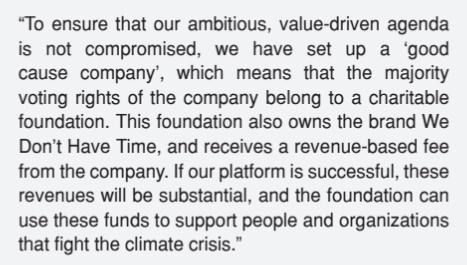




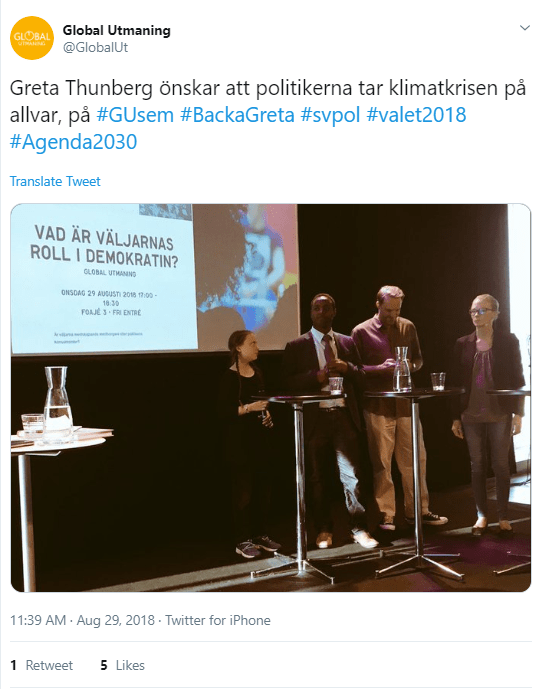
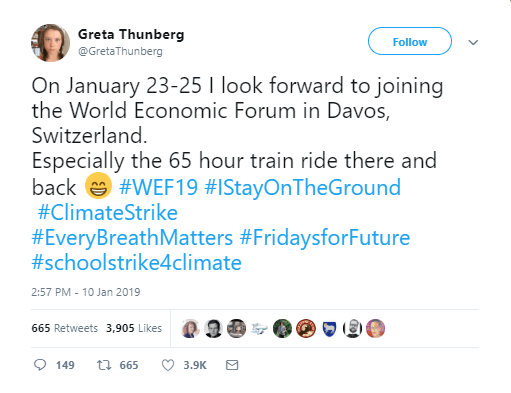

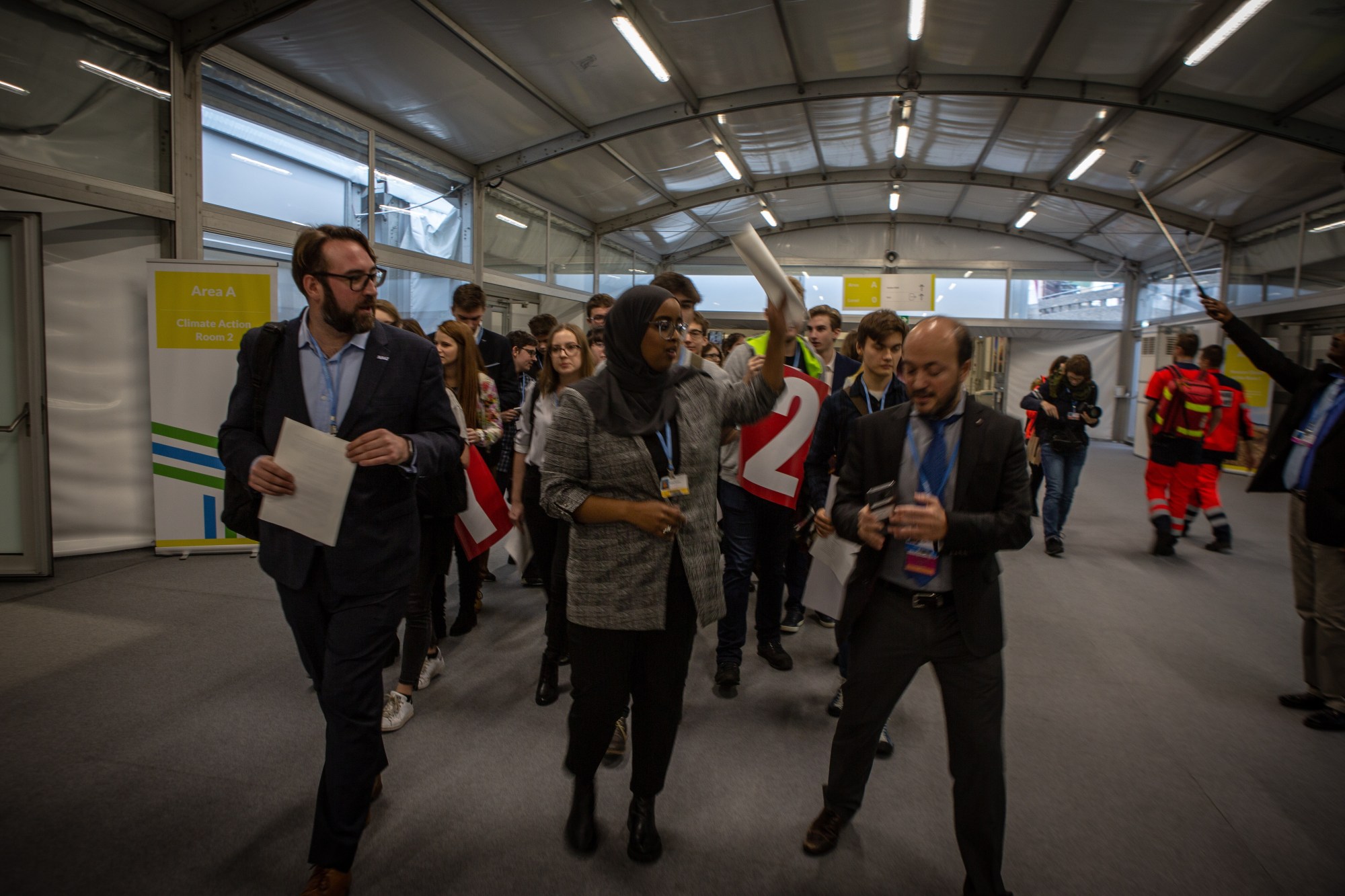

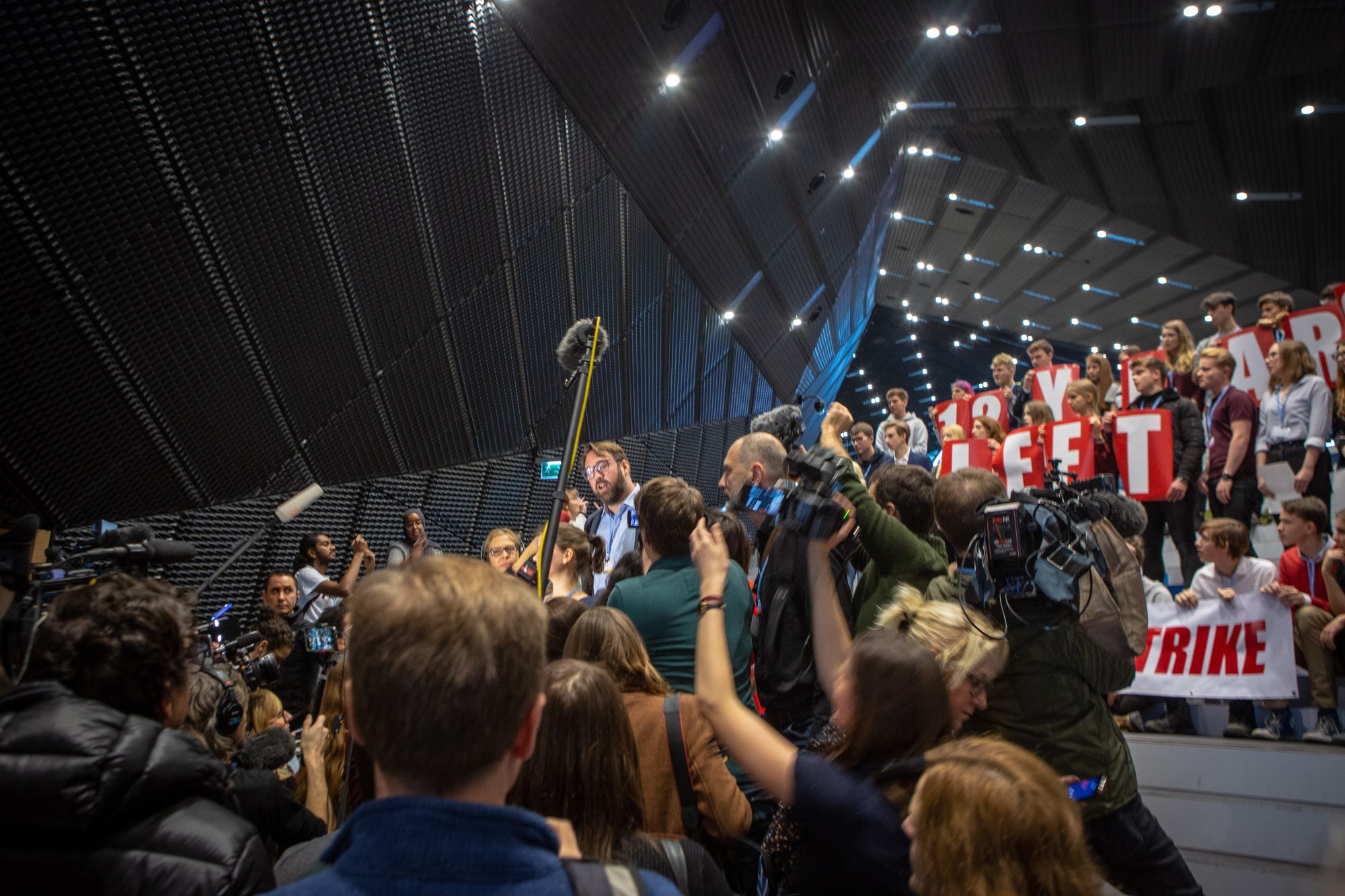

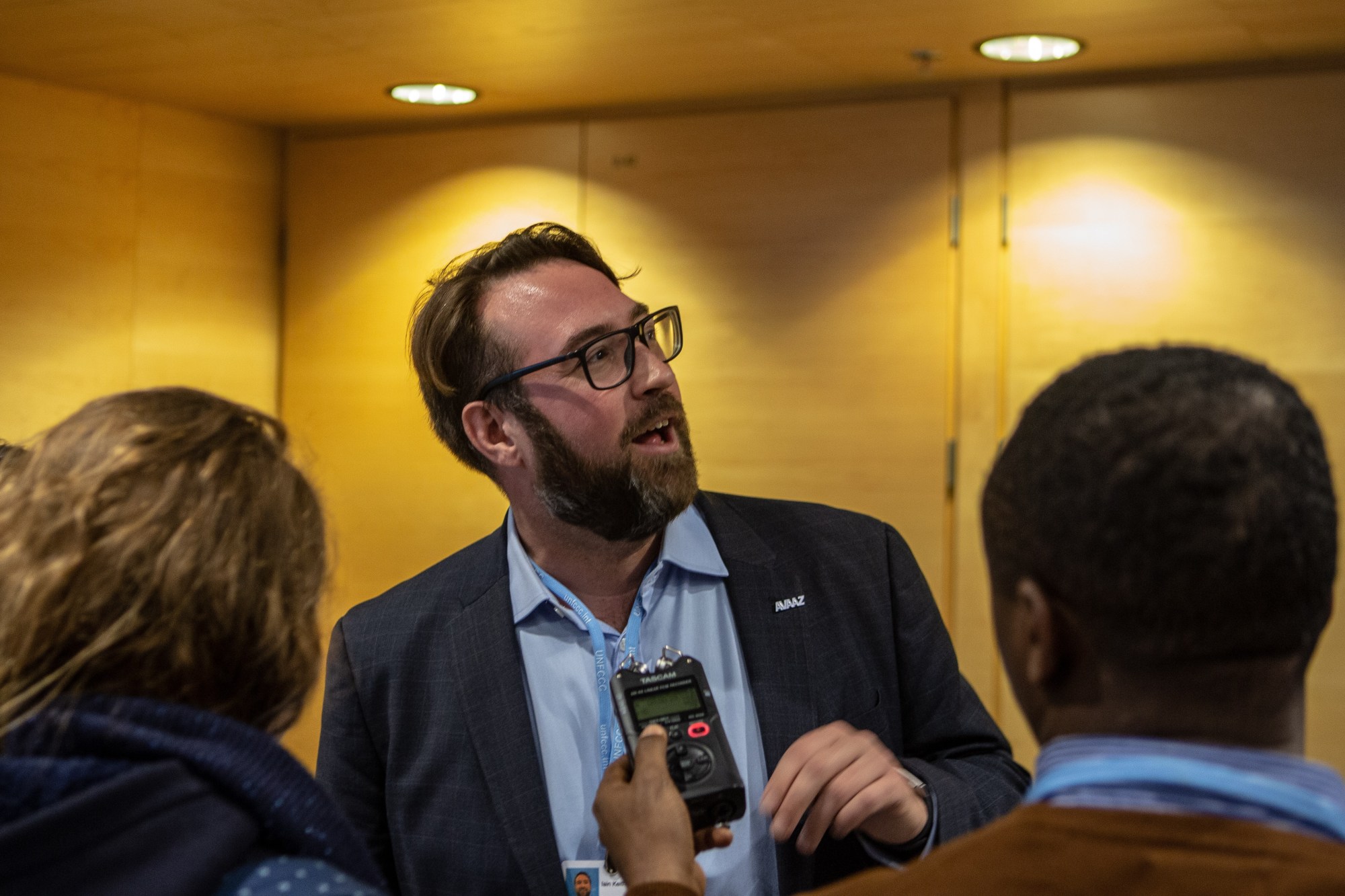

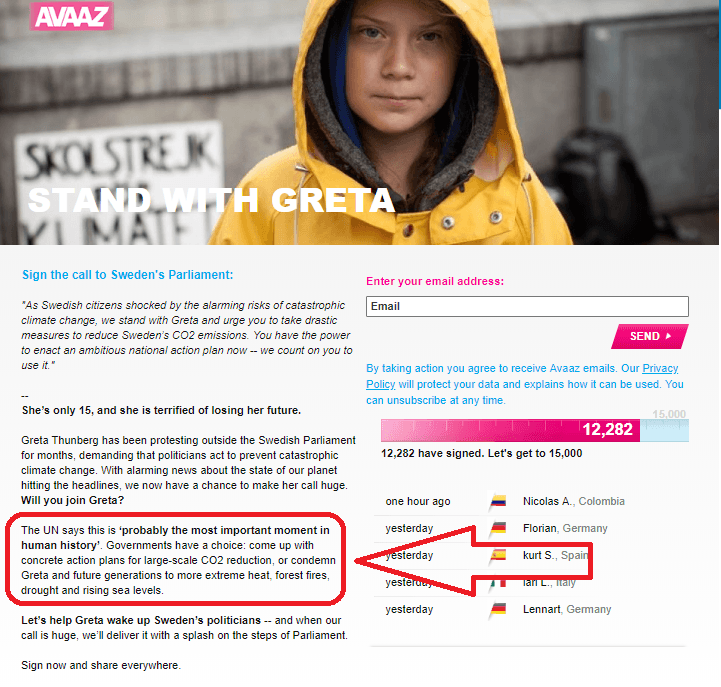


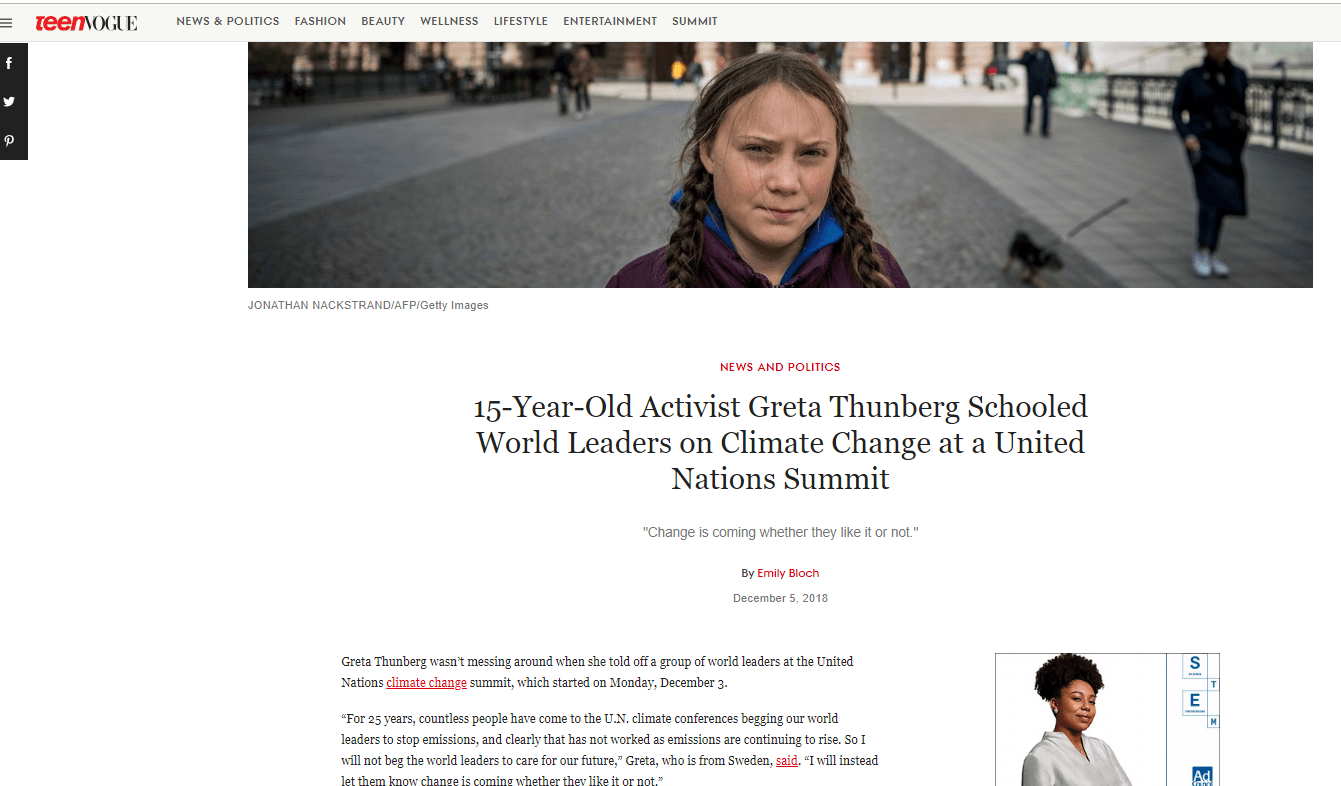




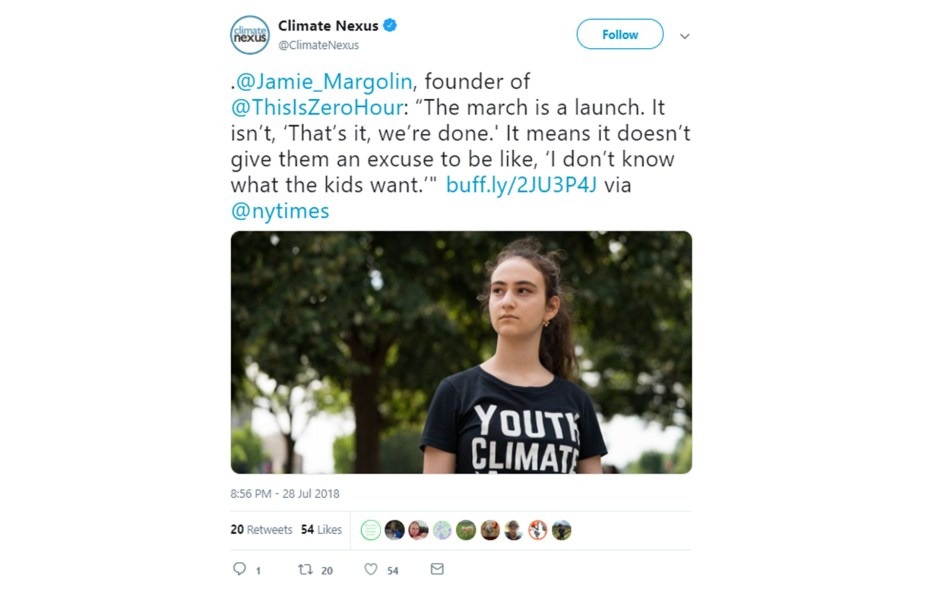



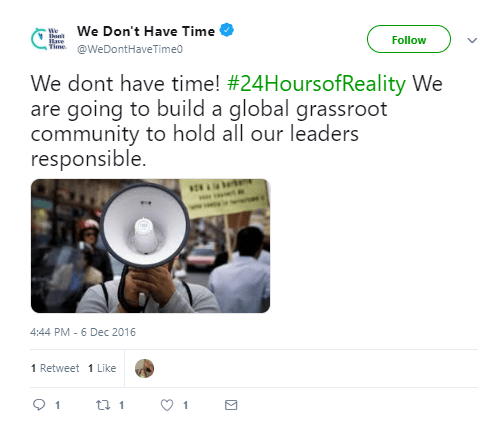
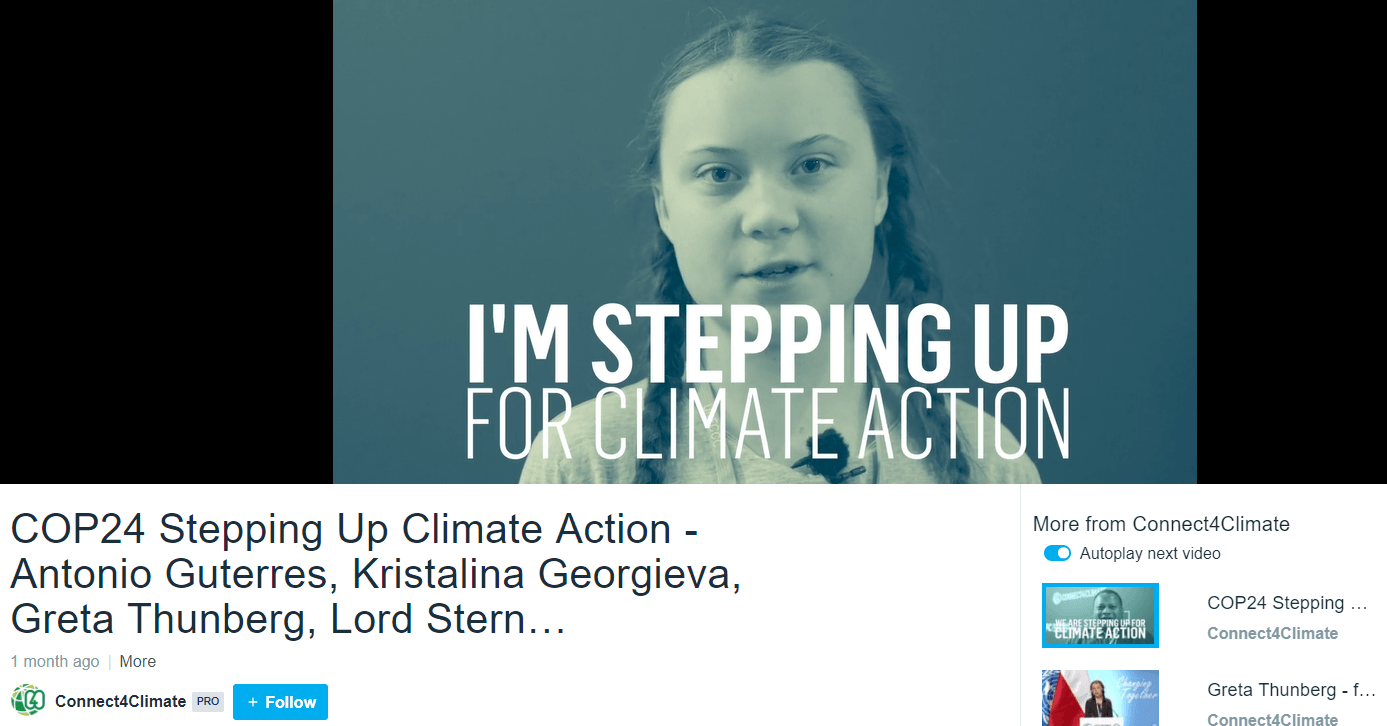
















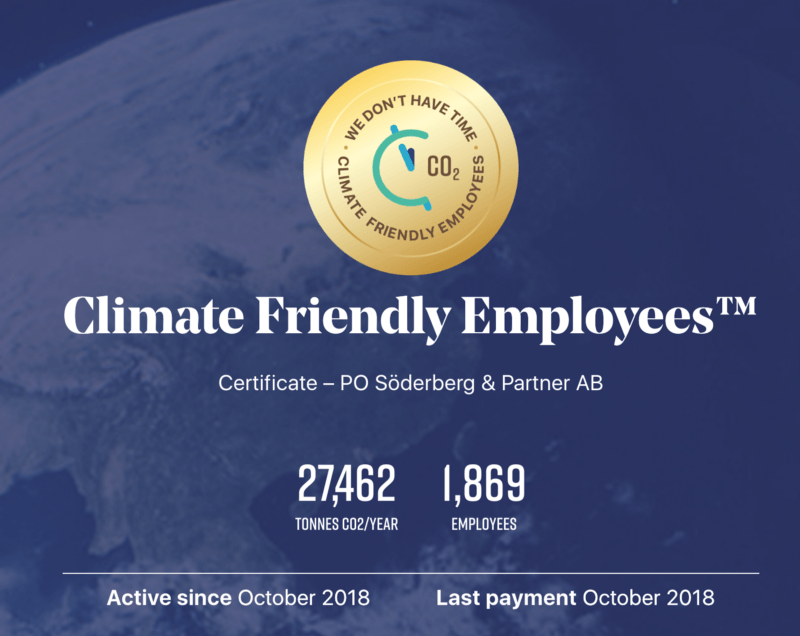


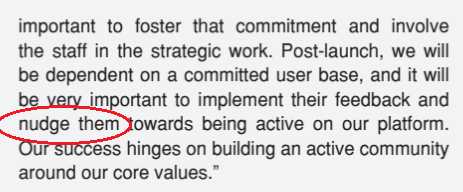
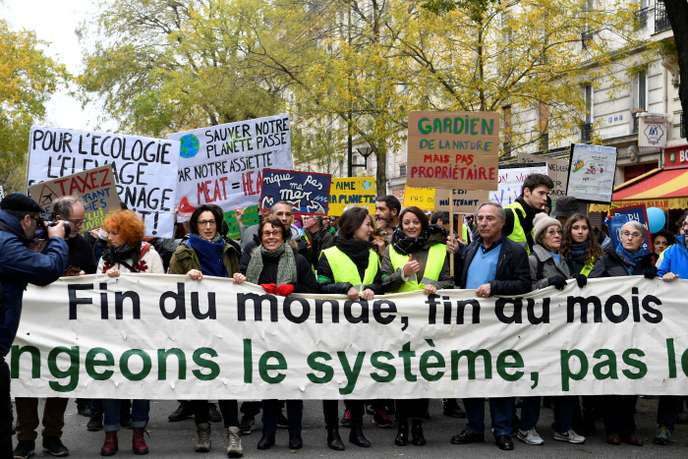


The idea that TripAdvisor is less gamed by fake accounts than Twitter or Facebook and is a reputable company seems a pretty naive one. Really it’s the same model, pretty much you could throw it in the basket with Facebook, Twitter, Uber, Amazon & amazingly expensive electric scooters as things we don’t need, and in fact would be a lot better off without.
In the above investigative report, WKOG is not implying that Trip Advisor is “less gamed” than any the other groups. We are just using that company in a comparative aspect. And if you read the article closely, we never intimate that the groups you mentioned were more or less susceptible to any type of subterfuge. We simply made an analysis in comparing Trip Advisor to ONE company in particular, which was We Don’t Have Time. In your attempt to somehow negate our analysis, you utilized a falsehood in saying that we compared Trip Advisor to these other companies when in fact, we were focusing on the differences between We Don’t Have Time and its particularly shoddy way of doing business.
Therefore to say that some companies aren’t anymore shoddy than others in a capitalist system is to say that you can get the same quality of food or shelter or water or anything else at any given place. Although capitalism puts profit above everything else, including life, there are still various entities that provide goods and services at different levels under that paradigm. Nothing and no one is monolithic as individual people and groups have different reasons and rationales for their actions. The end result is to garner profit. But how it is done varies like the direction of the wind.
For forty-five years I ran a wildlife refuge in a rainforest in Australia. Biology and science were my first teaching subjects and this earned the money to pay for it. I have recently conducted fieldwork with university master of science students in determining biodiversity on my refuge. Carbon Dioxide has nothing to do with the loss of species; rather deforestation, in particular, has everything to do with it. Next is the increasing amount of pollution that poisons soils, water and ocean. The theoretical greenhouse effect does not have an effect on species diversity, they have survived temperature increases and decreases in many times before. This is evidenced in the rocks and ice cores and such temperature changes are driven by the sun. It is criminal to mislead the public on such important matters and those at the front of these campaigns are likely to be making profit or power gains. I have always supported clean energy production, free of the toxic gases like sulfur dioxide and nitrous oxides that come from the burning of coal. It is time to get this straight – carbon dioxide is a trace gas that is not toxic, and it is the least worrisome of the greenhouse gases. Stop land clearing, especially in the Amazon, as large forests are critical for cloud formation throughout the world and we must reduce to nothing the pollution that poisons everything from microbes to man. It is the giant corporations that pollute in vast quantities, as does war.
So far I have only read Act 1. I have now subscribed and will read through all of your offerings in due course. I read for my BSc Environmental Studies, graduating in 1991 and was well aware of man’s impact on the planet even before then. Now in my 60th year, what is left of this planet is of no consequence to me (this crusty old body) except insomuch as it impacts my children, Grandchildren, and humanity in general. That said, according to James Lovelock (Gaia hypothesis) it is of no real consequence to the planet either, only to the human species. For, those below us on the sentient scale, perhaps have no current understanding of the global threat to life. Ergo only humans are cognisant individually to a greater or lesser extent of what we, if it is us, and or the planet’s cyclical events have in store for us and our demise.
Of course I would love to spend whatever time I have left in glorious and selfish enjoyment, providing that does not adversely impact on others. Furthermore, I would love the same to extend to my progeny. Sadly, I fear it will not.
So whilst I agree with your synopsis of what is in part the wrong kind of green, and your (limited by my only reading Act 1) suggested solutions, I feel it is all too little too late. Because, every day we argue over who is right or wrong and the corporatocracy in stealth or otherwise, continue down the road to self destruction, we move one day closer to our species’ final armageddon.
We (Humans) can change, of course. we can resolve the issue and possibly reverse the trend. But will we? I’ll leave that hanging.
My final thoughts on your article are in respect to Greta Thunberg. I accept entirely your assertion that you neither meant nor indeed did, cast aspersions as to her intent, her integrity or her credibility. But, I suggest that using the term ‘manipulated’, to some extent does exactly that. at least in respect the her integrity and credibility. Had you said instead that her actions were being hi-jacked by the (hopefully) well meaning, if erroneous mainstream Climate Change movement organisations I would have been in much more agreement.
You also fail to take account of her statement issued on 11 February 2019 where she states:
“Many people love to spread rumors saying that I have people ”behind me” or that I’m being ”paid” or ”used” to do what I’m doing. But there is no one ”behind” me except for myself. My parents were as far from climate activists as possible before I made them aware of the situation.
I am not part of any organization. I sometimes support and cooperate with several NGOs that work with the climate and environment. But I am absolutely independent and I only represent myself. And I do what I do completely for free, I have not received any money or any promise of future payments in any form at all. And nor has anyone linked to me or my family done so…
I was briefly a youth advisor for the board of the non profit foundation “We don’t have time”. It turns out they used my name as part of another branch of their organisation that is a start up business. They have admitted clearly that they did so without the knowledge of me or my family. I no longer have any connection to “We don’t have time”. Nor does anyone in my family. They have deeply apologised for what has happened and I have accepted their apology.
In the light of her statement, the point or at least very heavy inference in your article that she is intrinsically nestled in ‘We Don’t Have Time’ is simply wrong and disingenuous. A correction by yourselves would be honourable.
Otherwise. Go raibh mile maith agat, maith thú.
Thank you for your comment. In response to “You also fail to take account of her statement issued on 11 February 2019 where she states…”
Act I of our series was published January 17, 2019. ACT II would be published January 21st, and ACT III on Jan. 28th. Miss Thunberg’s much publicized statement was released February 11, 2019 – almost a full month after ACT I of the series was published. At this juncture, the series was gaining much traction.
The Thunberg statement claims that that the CEO of We Don’t Have Time, Ingmar Rentzhog, highlighted Thunberg’s participation with his tech foundation, in his company’s *financial prospectus (published and made public in November of 2018), without Thunberg’s knowledge or permission. That’s fair enough. It still doesn’t change any of the facts presented in ACT I of the series. [*”Financial prospectuses must describe the company’s organizational structure and operations as transparently as possible, to provide decision-making data for potential investors.”]
February 5, 2019 “We Don’t Have Time” newsletter:
“As you undoubtedly know, Ms. Greta Thunberg has become one of this planet’s most sought-after people. She therefore needs to fully devote herself to the worldwide climate strike movement that she has started, and no longer has the time to commit herself to being an advisory board member of the WeDontHaveTime Foundation. She continues to believe in and support our organisation and we will, of course, continue to give her our full support in the future.”
And even beyond the Non Profit Industrial Complex being paid by the plutocrats to serve their own interests, the strategies that focus on climate change inherenctly divert attention from the root cause of this and all other issues, especially in the context of the US empire: the systemic plutocratic corruption of politics. The following linked ebook provides an analysis that “professional activism” as such is the core reason why progressives lack a coherent strategy to recover democracy: http://ssrn.com/abstract=2904722
This book takes a wider view of the same phenomenon uncovered by this excellent series.
Just know that anything sponsored by the United Nations has an underlying agenda. I see this “We have no time” mantra as massaging the public into thinking of rushing a decision and that decision my friends will be this you can bet your boots – to bring in some hairbrained scheme of the geoengineers. And all their schemes are hairbrained. All of them. Because for them it’s about spending wads of YOUR money on more damage to the environment. What we need to do is reduce our consumption and have a rewards system that encourages such actions, grow hemp and kenaf and use rapidly renewable resources to replace petrochemicals. This is not rocket science people! And anything that comes from a centralized agency such as the UN should be automatically dismissed. Local is where it’s at – what you do locally is where our efforts must go. Use citizen media to promote these ideas
Excellent blog confirming thoughts I have been having for quite a while now, and certainly well before Greta came along.
When the CEO/COO of one of these NGO’s takes home more money than the equivalent in a Multinational Corporation, you know the wheels have fallen off the wagon.
Keep doing what you are doing please its vitally important
Epic work. And tireless patience with those who appear to be skim-reading and/or trolling. Your research efforts and journalistic and analytical standards are incredible. And your publishing of these analyses is seemingly too difficult for many to grasp, yet most of these issues are so in all of our faces whilst we collectively choose to ignore or – as so many have been trained to do recently, brand as fake news. Being vegan, I sympathize with the mountainslide of hate and scorn just for wanting to help humans dig their way out of the global shithole we have handed all life on Earth. Subscribing.
Emotional investment? A standard view is “The more emotionally invested you are in anything in your life, the less critical and the less objectively observant you become.” (David JP Phillips, We Don’t Have Time board of directors, “The Magical Science of Storytelling”). I think the opposite is true. Here is my reasoning.
Emotions are an integral part of what makes us human. I have suggested, with respect to the current environmental and climate change issues, that there are two sets of emotions at play, terraphthoran (Earth destroying) and terranascient (Earth creating) emotions. The Earth creating emotions are supported by all that we currently know about biological and climate science.
The terranascient emotions, when connected to science, form an objective foundation for personal and social commitment to certain courses of action, namely, avoiding the sixth great species extinction and catastrophic climate chaos.
We have then, a foundation for hope as the causes we are committed to are not arbitrary or nebulous, they are the strongest possible reasons to do something positive. For life to continue on Earth, particularly human life, we must connect our terranascient emotions to the objective order of life as understood and described by science.
Hence, I re-write the Phillips statement:
“The more terranasciently emotionally invested you are in anything in your life, the more critical and the more objectively observant you become.”
Could you clarify your position and thoughts on the climate degradation caused by Animal Agriculture following on Earl’s comments and your response of 20th March? Some 2.7 trillion fishes and other marine life and 70 billion land mammals (estimated) are slaughtered annually. Then there is species extinction in respect of free living animals, also as a direct result of commodification and interference by humans. The requirement for everyone to adopt a plant-based diet and prioritisation of education on anti-speciesism is being ignored across the board, other than a little lip service here and there.
The Most Important COP Briefing That No One Ever Heard | Truth, Lies, Racism & Omnicide [December 10, 2012]
“Also Ignored by the Non-Profit Industrial Complex at COP15: That industrialized livestock contributes over 50% of all GHG emissions.”
The Real Weapons of Mass Destruction: Methane, Propaganda & the Architects of Genocide | Part III [January 17, 2011]
“What is rarely discussed is the fact that as much as half of the annual worldwide greenhouse gas emissions contributing to climate change are now being attributed to the lifecycle and supply chain of domesticated animals raised for food. The livestock industry also contributes to massive deforestation, causing further acceleration of climate change. Due to the fact previously stated, that methane is a powerful greenhouse gas 72-100 times more powerful than carbon in the short term (5 to 20 years), how can it be that this issue is barely being discussed? Like heart disease – denying this issue constitutes a silent killer.
Livestock now accounts for up to 51% (Worldwatch Institute) of all greenhouse gas emissions. [19] Methane accounts for a vast amount of these emissions. Meat counts for more damage than all transportation combined on our finite planet. In June 2010 the United Nations issued a second urgent plea for a global united transition to a meat-free and dairy-free diet: “A global shift towards a vegan diet is vital to save the world from hunger, fuel poverty and the worst impacts of climate change.” Yet despite urgent warnings from the United Nations (the first in 2006) that countries must reduce meat consumption, this is just another lifestyle change the well-off would rather not discuss, even when this massive dent in emissions would cost nothing – we could all do it today, at our next meal. We could at least begin a transition today. Especially in light that this is one of the few solutions in the mitigation of climate change where citizens are free of government-asserted control over our decision of choice. The fact that it would be more effective in the fight to prevent catastrophic climate change to eliminate animal products from our diets than it would be to eradicate the entire globe of all vehicles of transportation combined is nothing less than incredible.
The fact that we dismiss such a simple action at the cost of future generations is revealing. What it sadly reveals is an increasingly unenlightened society that is effectively becoming more and more corroded by unadulterated individualism.
The Right to Destroy Ourselves
“Nothing will benefit human health and increase chances for survival of life on Earth as much as the evolution to a vegetarian diet.” – Albert Einstein
But why give fair and just transition programs and subsidies to independent farmers for making the critical transition to organic plant-based agriculture when we can just keep giving the billion dollar multinational corporations the vast subsidies to keep destroying our planet? And why give our children – who are at the mercy of our poor decisions – a healthy and compassionate diet when we can slowly kill them with an escalating epidemic of obesity and diabetes, costing the health care system billions? But hey, as long as the cost belongs to the taxpayers while the profits from disease line the pockets of the rich, what’s the problem?
Let’s face it, there is too much money to be made by the multinational corporations, who view our families, and especially our children, as nothing more than neon-flashing dollar signs. There is just too much money to be made on drugs, treatment and disease. Prevention is the enemy of corporate profit. And why even consider transitioning to a healthy plant-based diet when, instead, corporations can set another unknown disaster into motion – in this instance, cloned meat. Our “brilliant” species can do anything – except change the very patterns that destroy our own habitat and ultimately ourselves. Burn baby burn. Drill till we’re dead. Message from corporations to consumers (formerly known as citizens): Stuff yourself with meat, hormones and additives until you explode (or the planet explodes – whichever comes first).
As an exporter of meat, dairy and wool, New Zealand’s highest climate gas emission is methane, despite having a per capita car ownership that rivals California’s. How to fix this? Simple – like the IPCC, the government simply accounts for greenhouse gas emissions but doesn’t add in agricultural methane, even though methane is far more potent than CO2. Presto! Methane is no longer a problem.
There is no choice – if we want to continue living, there must be generous subsidies to assist a global conversion from industrial livestock farming to organic, primarily plant-based, small-scale agriculture rich in biodiversity. Intensive livestock production and the intensive food production for livestock contributes to massive deforestation and loss of biodiversity. Much of the cleared land for livestock could be reforested or returned to grassland – becoming lush carbon sinks rather than degraded lands that emit deadly methane. Conserving biodiversity, as well as feeding humanity, must be a global priority over sustaining factory-farmed livestock.
Like fossil fuels, states must eliminate the massive livestock and dairy subsidies. Such subsidies continue to be accepted and relatively unchallenged as states vie for export dollars by selling meat to other nations. Trade is set to be the number one sector of all fossil fuel consumption by 2030. Further, both the fossil fuel industry and the livestock industry must internalize the full costs of all pollution, including water pollution, CO2 from deforestation, methane from decaying animal parts (among other sources) and nitrous oxide from animal waste.
Will governments create such legislation? Not likely. For behind the red velvet curtain, the corporations run the greatest puppet show on Earth. This certain cause of CO2 and methane is the easiest (and most affordable) one to tackle – yet, almost five years after the initial UN warning we are not even discussing it.
October, 2010: Olivier De Schutter, the UN special rapporteur on the right to food states unequivocally:”There is currently little to rejoice about,” and “worse may still be ahead…. Current agricultural developments are… threatening the ability for our children’s children to feed themselves,” he said. “A fundamental shift is urgently required….” He continued that “giving priority to approaches that increase reliance on fossil fuels is agriculture committing suicide.” Today agriculture continues to decline because of accelerating climate change. Feeding factory-farmed livestock rather than feeding people is just one more slap in the face to human rights and social equity.
October, 2010: Scientists warn of a livestock greenhouse gas boom: “Soaring international production of livestock could release enough carbon into the atmosphere by 2050 to single-handedly exceed ‘safe’ levels of climate change.… The livestock sector’s emissions alone could send temperatures above the 2 degrees Celsius rise commonly said to be the threshold above which climate change could be destabilising.” They also make a more conservative estimate: “The sector will contribute enough greenhouse gas emissions to take up 70 per cent of the ‘safe’ 2 degree temperature rise.” The authors of the study called on governments to prioritize the reining in of the livestock sector, adding that “mobilising the necessary political will to implement such policies is a daunting but necessary prospect.” They suggest the world will have to reduce emissions by roughly 87 per cent relative to performance at a global scale in 2000.
And again, remember that 2ºC was never considered safe. From the 1990 United Nations AGGG report: “Temperature increases beyond 1°C could trigger rapid, unpredictable and non-linear responses that could lead to extensive ecosystem damage.” The absolute temperature limit of 2°C in the same report was motivated as the limit beyond which the risks of grave damage to ecosystems and of non-linear responses are expected to increase rapidly.
In the video below (2011:13:57), The Genetics Myth, Dr Robert Sapolsky, Dr James Gilligan, Dr Gabor Maté and Richard Wilkinson speak of how a society void of ethics, effects our behaviours and emotional health.”
Post Cop15 | Time to be Bold [October 20, 2010]
“There must be generous subsidies to assist a global conversion from industrial livestock farming to organic, primarily plant based small scale agriculture rich in biodiversity. Intensive livestock production and the intensive food production for livestock contributes to massive deforestation and loss of biodiversity. Conserving biodiversity, as well as feeding humanity must be a global priority over sustaining factory-farmed livestock and bio-fuel production.”
10:10:10 – Marketing, Manipulation, and the Status Quo [October 8, 2010]
“Pablo Eisenberg at Georgetown University’s Public Policy Institute has stated, “although we know that our socioeconomic, ecological, and political problems are interrelated, a growing portion of our nonprofit world nevertheless continues to operate in a way that fails to reflect this complexity and connectedness.” This unwillingness to confront the broader issues of climate change such as militarism, livestock, and the capitalistic practices inherent in the current corporatocracy, is at the heart of the crisis of the climate change movement. Behind closed doors, the organizations manipulating and exploiting 10:10:10 know and understand the dilemma created by their infatuation with the corporate power structure. Yet the big greens refuse to advance these fundamental issues. And to be fair, they can’t. For if they were to be effective, in a meaningful way that actually started a paradigm shift, they would quickly be cut off from their generous ‘partners’. These groups have become barriers to the movement. They no longer represent civil society, but stand as walls to protect the system. They utilize the coercive tactic of inviting supposed leaders of civil society into sanitized circles of power, and simultaneously repress the rank and file climate movement.”